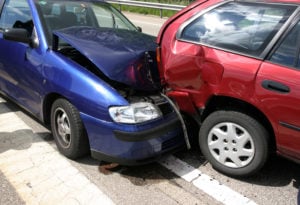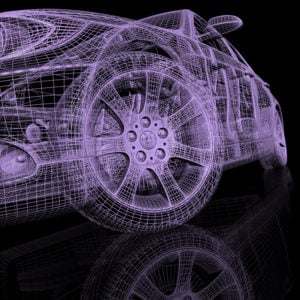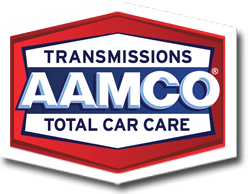Not All Cars Have Automatic Braking Systems
Does your car have an automatic braking system?
Automatic braking is a safety feature on many modern cars that increases braking effectiveness.
The system detects how far and fast the vehicle in front of you is moving, and automatically brakes faster than a human can if sudden braking is needed.
 Basically, if you don’t respond in time to a sudden braking situation, the automatic braking system works to reduce the chance of a crash, as well as reduce the severity of a collision if it occurs. Some systems are designed to prevent collisions altogether, but most simply reduce the vehicle’s speed before a collision, thereby reducing the magnitude of injury and damage. Some systems assist the driver in braking by helping to maintain control and apply the brakes more quickly in a rapid pumping action than any human could. Other systems actually have the computer take over and brake for the driver.
Basically, if you don’t respond in time to a sudden braking situation, the automatic braking system works to reduce the chance of a crash, as well as reduce the severity of a collision if it occurs. Some systems are designed to prevent collisions altogether, but most simply reduce the vehicle’s speed before a collision, thereby reducing the magnitude of injury and damage. Some systems assist the driver in braking by helping to maintain control and apply the brakes more quickly in a rapid pumping action than any human could. Other systems actually have the computer take over and brake for the driver.
Related: How Brakes Work
How do automatic braking systems work?
Automatic braking systems use sensors and a variety of computerized brake controls to prevent or mitigate collisions.
A modern vehicle automatic braking system involves numerous separate systems. A full-fledged system makes use of a combination of systems, but usually, all include forward collision warning, forward collision mitigation, or forward collision avoidance, as well as emergency brake assistance, and anti-lock brakes.
Anti-Lock Braking System (ABS)
Anti-lock brakes have been available on cars for decades, and are the most common systems found to help drivers with safe braking. Anti-lock brakes stop the wheels from locking up in a panic braking situation. They sense the motion of each wheel and detect skidding or severe braking. If skidding or massive sudden brake pressure from the driver is detected, the ABS will pump, or pulse, the brakes as needed to prevent the car from skidding out of control. The anti-lock braking system can pump the brakes hundreds of times per second – faster than any human can – which helps the driver maintain control of the car.
Emergency Brake Assist (EBA)
Designed to add braking power if the driver doesn’t apply enough pressure to the brakes during a panic stop, this system can override the driver entirely and apply full brake force. This alone is not an automatic braking system. Despite different names across the various automakers, all brake assist systems operate on the same basic principles and work to provide additional stopping power in the event of an emergency braking situation.
Forward Collision Warning (FCW)
Forward collision warning (FCW) is a warning system that gives the driver time to take action first and prevent an accident – but it is only a warning system. The computer does not take over and do the braking if the driver does not react in time. Some cars only have forward collision warning, but no computer-controlled brakes. This is not an automatic braking system. It will not operate the brakes for you.
Forward Collision Mitigation (FCM)
A forward-collision mitigation (FCM) system warns the driver and applies the brakes simultaneously. This system should not be confused with forwarding collision warning (FCW) because FCW does not take any action. What FCM does is apply the vehicle’s brakes as the computer calculates the vehicle’s situation, such as velocity and distance. An FCM is not necessarily designed to fully stop the car in an emergency situation, but reduce, or mitigate, the damaging effects of a collision.
Forward Collision Avoidance (FCA)
Avoiding a collision completely is what a Forward Collision Avoidance (FCA) system is designed to do. It is the most complex system because the factors that must be considered and calculated to actually avoid a collision are numerous. This system is more a marketing gimmick in its name – people would rather avoid a collision altogether. But even a collision avoidance system can’t make that guarantee. An FCA uses automatic braking assistance, anti-lock brakes, and even assisted steering in order to achieve its goal, but the reality is you’re probably still going to crash. An FCA, like an FCM or FCW, will help reduce the severity of a crash.
An automatic braking system involves a number of systems working together to either mitigate or avoid a crash.
Those systems provide a lot of information that helps the total automatic braking system be constantly aware of trouble.
 A true automatic braking system uses some form of the aforementioned general collision detection or warning systems in combination with others to achieve full collision avoidance or mitigation, and automatic braking that takes over for the driver when certain conditions are met. A multitude of sensors continuously detects and calculates conditions and situations, delivering the data to the computer, which calculates what is needed to break-in time. Other systems that are used in the detection and calculation of conditions such as speed or objects in the road include laser, radar, and cameras. Some of these systems even monitor road conditions (snow, ice, rain) and process them in their on-the-fly calculations. Other dynamics processed include speed, distance, and braking pressure.
A true automatic braking system uses some form of the aforementioned general collision detection or warning systems in combination with others to achieve full collision avoidance or mitigation, and automatic braking that takes over for the driver when certain conditions are met. A multitude of sensors continuously detects and calculates conditions and situations, delivering the data to the computer, which calculates what is needed to break-in time. Other systems that are used in the detection and calculation of conditions such as speed or objects in the road include laser, radar, and cameras. Some of these systems even monitor road conditions (snow, ice, rain) and process them in their on-the-fly calculations. Other dynamics processed include speed, distance, and braking pressure.
Related: 10 Brake Repair & Maintenance Terms
Maintain your brakes for safety, performance, and peace of mind.
Keep the sensors clear.
Because automatic braking systems use sensors that might become obscured, dirty or blocked by dirt, ice, snow, or water. The system should tell you that it’s not working, at which point you should check to see if they are obstructed. Check your owner’s manual for the location of the sensors.
Brakes don’t last forever, so get them checked if you notice a lapse in performance.
If you notice any lack of performance with your brakes, you should have the entire system inspected and serviced immediately. If you don’t, you will either damage your braking system further and possibly other components, resulting in costly repairs, or you’ll raise your risk of being involved in an accident. Even if the automatic braking system is doing its computerized job, it’s worthless if the basic things like discs and pads are worn out.
Related: Tips for Brake Maintenance and Service
AAMCO Colorado Brake Services
Visit an AAMCO Colorado transmission repair and total car care center near you when issues arise and you need to have your brakes checked or serviced. Call or book an appointment online.
If you have questions about your car’s road readiness, or about car repair and maintenance topics, AAMCO Colorado can help. You can also use the AAMCO Colorado Ask a Mechanic feature to submit your auto repair questions. They will be answered by a real AAMCO Colorado mechanic as soon as possible.
 Other Articles About Car Maintenance & Repair
Other Articles About Car Maintenance & Repair
My Car Rolls When I Put It In Park
If you have an automatic transmission, you expect your car to stay in place when you put it in park. If your car rolls when in park, or your transmission is slipping or you’re experiencing other issues, bring your car to AAMCO for a complete Vehicle Courtesy Check. This will help identify any possible issues that need to be repaired. Read more…
Reasons Your Transmission is Overheating
If your transmission is running hot, be aware of possible causes. Most transmission problems are a result of overheating. The reasons for overheating include low fluid levels, leaks, burned, old or ineffective fluid, and problems with the solenoid. You can ensure the long life and efficient performance of your transmission – and your car – by doing some things to make sure it does not run too hot. Read more…
Change Your Transmission Filter
A transmission filter prevents dirt and debris from getting into the gears and other parts of the transmission system. It is positioned above the transmission pan, which collects excess fluid, and below the pickup tube that connects to the oil pump, which regulates the pressure of fluid in the transmission. Read more…
Why Does My Car Shake When Stopped or Idling?
Your car should run smoothly, whether moving or stopped. If it shakes while it idles, you could be in for a visit to the mechanic. When your car is functioning properly it should run smoothly in all driving modes – moving fast, slowly, stopped and idling. A sign that the engine needs to be checked, and possibly need some repairs, is when your car shakes as it idles. Read more…

 Other Articles About Car Maintenance & Repair
Other Articles About Car Maintenance & Repair